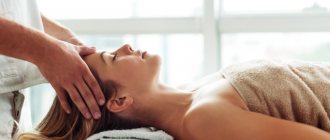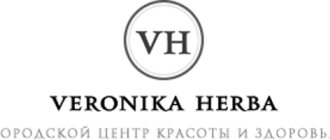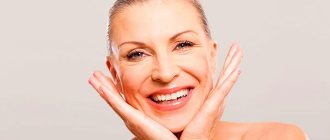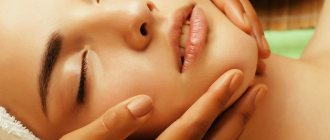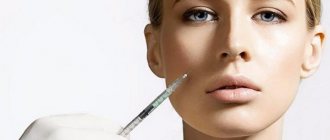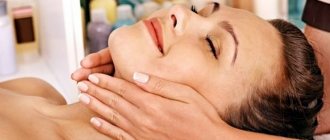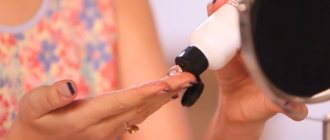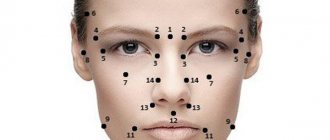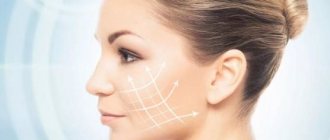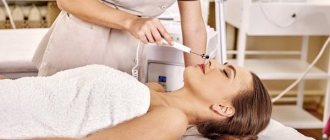It is known that a woman’s main weapon is youth and beauty. But no matter how sad it may sound, over time, youth turns into maturity, and old age is not far off. The skin on the face loses its elasticity, becomes flabby and wrinkled. Some people come to terms with this, gradually accepting the changes that are taking place. For others, such changes are unacceptable, and all sorts of methods are used to preserve beauty. Subcutaneous injections, resurfacing, creams and even plastic surgery begin. But there are also more loyal methods of rejuvenation. One of the best in this direction are the Revitonics exercises.
Causes of aging. Revitonics opinion
Our face is the whole world. More than 100 muscles and 29 cranial bones are responsible for its unique appearance. It is by the type of attachment of the former to the latter that the facial and masticatory muscles of the face and neck are distinguished. All muscles shorten with age, worsening the appearance of the face, but each type does so differently.
Official website of the Revitonics school
Facial muscles connect the skin to bones and other muscles. As they dry out, they pull the skin along with them. And the skin, losing its ability to resist this process with age, sags. Wrinkles around the mouth, on the forehead, bridge of the nose, chin, nasolabial folds - all these are consequences of deformations of the facial muscles.
The muscles of mastication connect bones to bones. As they age, the shape of their face becomes deformed. The line of the jaw and chin changes. The oval of the face becomes unclear. In general, the proportions of the head are off. On our website facesave.ru you can learn more about the anatomy of the facial muscles.
How to get rid of such consequences? Sculptural fitness Revitonics allows you to independently launch natural rejuvenation. You can restore the correct anatomical shape of the muscle corset. This is possible if you relax your facial muscles, relieve spasms and tension. As a result, the oval will acquire a clear contour, wrinkles and nasolabial folds will disappear, and the skin texture will be restored.
Why do we grow old - the theory of Revitonics
It is believed that facial aging is associated with a loss of elasticity and firmness of the skin, resulting in the formation of wrinkles and sagging. However, changes in skin quality are just consequences of more global processes. There are more than 70 muscles on the face, attached to 29 bones of the skull; blood and lymph move through the vessels.
N.B. Osminina - author of the Revitonics method
Any failure in the internal structure is immediately reflected on the surface of the skin. So muscle spasms cause their contraction, as a result of which the skin that was stretched over the muscle corset begins to sag (Roman blind effect). Due to spasms and tension in the muscles, blood flow deteriorates. The lymph on the face, which removes toxins, also stops moving normally. As a result, the complexion becomes gray and swelling appears.
The condition of the face is reflected in the condition of the spine and neck. Slouching causes the skin of the entire body to tighten behind the body and begin to sag in front. Spasms of the neck muscles prevent blood from flowing normally to the head, worsening the condition of the face.
This knowledge about aging made it possible to develop the innovative rejuvenation technique “Revitonika”.
The author of the method is Natalya Borisovna Osminina, who devoted more than 20 years of her life to studying the topic of natural rejuvenation.
Revitonics by Natalia Osminina is a scientific and empirical method of appearance correction and rejuvenation, which has no analogues in the world in terms of its effectiveness and sustainability of the effect obtained.
A little history
The history of the emergence of the Revitonics system is ambiguous. The authorship, according to different sources, belongs to two different women. But let's try to go through the facts and chronology. Natalya Borisovna Osminina became known for her research in this direction in 1994 in Lithuania. For more than 10 years, the author conducted various tests, developed her experience, working with hundreds of women. The innovative technique has received scientific justification and public recognition. In European countries: Sweden, Germany, Italy, Israel, it has become especially popular.
In 2009, Natalya Osminina began collaborating with Russian expert in the field of anti-aging massage Anastasia Dmitrievna Dubinskaya. Together with her, they created a whole direction, a school with a rich methodological base. Russian women learned this technique already under the name “Revitonika” in 2010. During this period, the technique was distributed as a set of teaching aids, atlases, packaged in an elegant box.
In the photo: Natalya Osminina
The first school was opened in 2012 in Moscow, on Mira Avenue. The founder of the school is Anastasia Dubinskaya. Here the first trainers were trained, basic complexes and exercises were worked out and adapted.
The Revitonics system appeared in the format of electronic video courses in 2013. These were not yet online courses, but users already had significant freedom in implementing the methodology. In the same year, the school entered into a partnership with the Beauty Institute on Arbat.
In the photo: Anastasia Dubinskaya
From 2013 to 2015, branches and representative offices began to open throughout the country. Instructors, trainers, as well as specialists in beauty salons were trained everywhere.
From 2015 to the present, the main office of the Revitonika school is located at Moscow, Leninsky Prospect, building 30.
Official website of the Revitonics school
At the same time, Dubinskaya and Osminina stop collaborating. Anastasia remains the leader and founder of the Revitonics school. Natalya Borisovna leaves school completely and further continues to develop her technique, giving it the name Osmionics.
Double chin exercises
You can reduce or completely remove a double chin using the “Frame” exercise. You need to raise your arms above your head, cross them, clasping your elbows with your palms. A frame should be formed visually. The head bends forward, resting against the interclavicular cavity.
In this position, you should stretch your spine upward as much as possible. The exercise is continued for 30 seconds. It is necessary to get out of the situation smoothly and slowly.
Revitonics. Objectives, principles, results
Natalia Osminina's Revitonics, as a rejuvenation system, is based on the scientific and practical principles of biohydraulics, biomechanics, theoretical mechanics, quantum physics, etc. Revitonics considers the elimination of the causes of old age to be the principle of natural rejuvenation.
Tasks:
- Balance of tension of facial and chewing muscles;
- Stimulation of natural lymphatic drainage;
- Relaxation of the muscles of the face and neck due to improved psycho-emotional state;
- The complex affects the entire body, improving both its external and internal condition.
Self-modeling of the body and face using revitonics gives amazing results :
For body:
- Restoring balance;
- Posture alignment.
For face shape:
- Restoration of the oval;
- Recreating the contour of the chin;
- Reducing swelling;
- Return of the young devils.
For the neck:
- Increase in length;
- Elimination of the “double chin” defect;
- Reduction of fat deposits on the chin;
- Elimination of "withers";
- Reducing the symptoms of cervical osteochondrosis.
For skin:
- Reduction or complete elimination of wrinkles;
- Restoration of blood circulation;
- Improving skin color and texture;
- Restoration of collagen fibers.
Exercises from Anastasia Dubinskaya
Truly effective results of appearance rejuvenation using the revitonics method can only be felt by purposeful and persistent students, since a one-time course can only give a short-term effect.
Videos demonstrating exercises help beginners and prove that for facial rejuvenation it is not necessary to resort to radical means of plastic surgery and cosmetology.
Contraindications
Revitonics is scientifically proven and brings undeniable benefits. But despite this, there are a number of factors that impose serious restrictions on its use.
To find out, consult your doctor if you have:
- Autoimmune diseases;
- Problems with the thyroid gland (hypothyroidism);
- Skin diseases;
- Diseases of the respiratory system, including chronic ones;
- Other systemic diseases.
- Revitonics cannot eliminate external deficiencies caused by illness in the body.
- For example, edema caused by renal failure. Manipulation of such areas can cause their condition to worsen.
Physical impact on the skin is strictly prohibited if you have the following health problems:
- Hypertension;
- Diseases of the blood and blood vessels;
- Injuries to the head, neck, back;
- Warts, eczema, psoriasis;
- Osteoporosis;
- Oncology, diabetes, immune system diseases;
- Inflammation of the facial nerve;
- Mental illnesses.
Official website of the Revitonics school
Author Osmina N.B. does not recommend combining Revitonics and other facial practices, since their principles of influence may not coincide, the result will be unpredictable and, most likely, negative.
Nasolabial folds
Exercises to reduce nasolabial folds on the face through revitonics are no less effective than the previous ones. A lot of video materials help you thoroughly study the technique and perform it correctly.
Exercise 1
Starting position: sitting straight on a chair. You need to combine the index and middle fingers on each hand. Place them on the nasolabial folds and apply pressure.
Open your mouth slightly and make a circle with your lips. Mentally count down 10 seconds. Open your mouth wider, forming a large circle with your lips. At the same time, do not forget to press the muscles of the nasolabial triangle (tension should be felt). Hold the final position for 20 seconds. It is performed 5-10 times.
Exercise 2
Place your index fingers on the skin between your nose and upper lip. Very slowly stretch your fingers in opposite directions to the very corners of your lips.
A similar manipulation must be carried out with the skin under the lower lip. The exercise is repeated 5 times for each zone.
Important! Sliding-stretching is carried out only after the skin has been naturally moistened by the influence of the fingers. Otherwise, stretching will be harmful to the epidermis.
Rules for performing Revitonics techniques
Gymnastics for the face and neck are organized in such a way that some of the techniques can be performed at home (basic complex). They are available in online courses and marathons. And some methods included in the full complex can be practiced strictly in the presence of specialists, and this is only possible during face-to-face training.
Execution order.
Where to start? Despite the fact that the Revitonics method has many types of exercises, they all have common principles:
- 30-second muscle contraction to relax them;
- Even work with the internal muscles to return them to their original length;
- The manual self-modeling system is completed by fixing the muscles in the correct position for 2-5 seconds.
Interesting: How to relax your facial muscles without Botox
Exercise to form high cheekbones
Effect: formation of the correct position of the cheekbones and overall tightening of the facial skin.
Execution in two stages:
Stage 1. Place your cheekbones on the stools of your palms and tilt your head down. Hold this position for five seconds. Then begin to push your cheekbones with springy movements up and to the sides towards your temples, as if you are sculpting a face. Having reached the temporal region, stop in this position for a couple of seconds. Repeat the exercise 3-4 times.
Stage 2. Place one hand behind your head, place your fingers on your temple, then pull them up and fix the position. Place the fingers of your other hand on your cheekbone and perform ten spiral massage movements in the direction from the outer corner of the eye to the ear.
Watch video exercises
Revitonics: facial exercises
Revitonics restores youth by working comprehensively with the entire face. The technique helps to relax and stretch all the facial muscles.
Techniques for the forehead
How to smooth your forehead
The eyebrow wrinkle will disappear from your face. Exercise will not only help smooth your skin, but also improve your sleep. You will fall asleep and wake up easier, your sleep will become stronger. As a result, you will get a better quality rest.
Relaxing the forehead, raising the eyebrows
Self-massage is convenient to perform in the morning while lying in bed, and also in the evening before bed.
You can also continue gymnastics while lying down.
Revitonics for eyes
The eyes are the part of the face that primarily reveals age. To slow down aging, it is necessary to rehabilitate this area. To do this, you need to regularly perform eye exercises.
Enlargement of the orbit at the inner corner of the eye
Perform the technique for each eye separately, starting with the left.
Effect: youth, radiance of eyes.
Expansion of orbits
Effect: eyes wide open.
Revitonics for lips
It is the desire to have beautiful lips that most pushes women to get injections. But injections are not the only way out. Appropriate Revitonics techniques will help turn back time and make this part of the face younger and more beautiful.
Exercise for the corners of the lips
The technique will help lift the corners of the lips, making their shape more expressive and attractive.
LiveInternetLiveInternet
It is known that a woman’s main weapon is youth and beauty. But no matter how sad it may sound, over time, youth turns into maturity, and old age is not far off.
The skin on the face loses its elasticity, becomes flabby and wrinkled. Some people come to terms with this, gradually accepting the changes that are taking place. For others, such changes are unacceptable, and all sorts of methods are used to preserve beauty. Subcutaneous injections, resurfacing, creams and even plastic surgery begin.
Age-related changes in appearance do not happen suddenly; it is a gradual process that begins with little things. We begin to notice the first signs after 25 years. How to stop this without resorting to radical plastic surgery or ineffective cosmetic procedures? There are also more loyal methods of rejuvenation. One of the best in this direction are the Revitonics exercises.
We are watching a master class on the Revitonics system from Anastasia Dubinskaya. Five popular exercises are demonstrated by Anna Agofonova. The author of the method is Natalya Borisovna Osminina, who devoted more than 20 years of her life to studying the topic of natural rejuvenation. Revitonics by Natalia Osminina is a scientific and empirical method of appearance correction and rejuvenation, which has no analogues in the world in terms of its effectiveness and sustainability of the effect obtained.
Why do we grow old - the theory of Revitonics
It is believed that facial aging is associated with a loss of elasticity and firmness of the skin, resulting in the formation of wrinkles and sagging.
However, changes in skin quality are just consequences of more global processes. There are more than 70 muscles on the face, attached to 29 bones of the skull; blood and lymph move through the vessels. Any failure in the internal structure is immediately reflected on the surface of the skin. So muscle spasms cause their contraction, as a result of which the skin that was stretched over the muscle corset begins to sag (Roman blind effect). Due to spasms and tension in the muscles, blood flow deteriorates. The lymph on the face, which removes toxins, also stops moving normally. As a result, the complexion becomes gray and swelling appears. The condition of the face is reflected in the condition of the spine and neck. Slouching causes the skin of the entire body to tighten behind the body and begin to sag in front. Spasms of the neck muscles prevent blood from flowing normally to the head, worsening the condition of the face.
Revitonics: principle and direction of action
Revitonics for the face of Natalia Osminina is based on:
■ bringing the muscles of the face, neck and back to their natural position by stretching and aligning them; ■ normalization of lymphatic drainage in the body; ■ relieving emotional tension leading to tightness of the facial muscles.
“Revitonika” is a system of techniques aimed at launching the process of natural rejuvenation of the body by restoring its impaired functions. As a result of regular fitness classes for the face and neck, lymphatic massage using the Revitonics rejuvenation system, the balance of the front and back of the body is equalized, lymph flow is normalized, previously tightened muscles relax and stretch, which leads to a tightening, restoration of the oval of the face, disappearance of the double chin, and better blood supply and complexion, reducing swelling.
Rules for performing Revitonics techniques
Before you start training according to Natalia Osminina’s method, you need to familiarize yourself with the rules for performing a set of exercises for the face.
✔ “30 seconds” rule Many fitness routines are based on the “30 seconds” rule. It consists of squeezing both ends of a hypertonic muscle or an entire muscle block for 30 seconds. By squeezing the muscle for half a minute, we help the body resolve this spasm and relax. It is rare that the body “copes” with it in a shorter period of time, and it is also rare that more time is needed and repetition of the exercise is required.
Actually, this is the work of “reverse” techniques, when we return to the original point that caused the tension and temporarily increase the spasm, bringing the situation to the point of absurdity, thereby pushing the body to resolve it. 30 seconds is the empirically calculated time that the body needs to independently “extricate itself” from a block of problems, get out of a state of spasm and produce an effect in the form of relaxation.
Usually, while performing the technique, there is a feeling of freedom of movement. In this case, gently push the tissues, applying a gentle force (no more than 10 grams), as if squeezing them.
Maintaining a time of 30 seconds applies only to techniques for relieving muscle hypertonicity. The use of less time (10-20 seconds) in some exercises is related to other techniques based on the principles of post-isometric relaxation.
✔ Muscle stretching Almost always, when performing techniques, a gentle stretching of the muscle or working area is required. This is necessary in order to return the muscle, shortened by a previous spasm, to its original length. Stretching should be done slowly and smoothly, since we are not working with the muscle directly, but through its connective membrane - the plastic fascia. All housewives who have had to deal with hard white films when cutting meat know what it is. Not only muscles and bones, but in general all our organs are wrapped in similar “films” - fascia, which are connected into a single system throughout the body. Anatomically, it is believed that the facial muscles do not have fascia. Indeed, the membranes of facial muscles are very thin. However, the surface layer of each facial muscle has a denser structure than its inner part. Their outer shells can also be called fascial, since they perform the same tasks and work on a similar principle as the fascia of skeletal muscles. By its nature, fascia is plastic and, when worked correctly, can be stretched: this should be done very slowly and gently, with the feeling that an elastic band is being stretched under your fingers.
✔ Pre-tension Pre-tension is a preliminary step to performing many techniques. This is the primary tension of tissues towards each other or in opposite directions until the first stop and maintaining the level of this tension until the reaction to relax the muscle begins, that is, release is achieved.
✔ Fixation Fixation is the final touch of the exercise, which is stopping the hands in the correct position for 2-5 seconds. Fixation is necessary to stabilize the results so that the muscle (or tissue) remembers its new position.
✔ Load When performing many exercises related to working according to the “30 seconds” rule, the force of tissue clamping should be minimal. Techniques for relieving hypertonicity from facial muscles do not work directly with the muscles, but with their tension at the level of the ascial membranes. Therefore, on average, the load on the tissue (called perceptual) should be minimal and amount to approximately 5-10 grams. This is the weight of a ten-ruble coin. It is strictly prohibited to force the achievement of results by applying additional forces.
✔ Balance “Balance” is the central concept in the Revitonics methodology, as it supports its main advantage - a combination of effectiveness and harmlessness. In relation to the face, everything must be in balance, from the fibers of the muscles in relation to each other to each bone of the skull. This principle is observed throughout the entire body - everything must correspond to the perfect matrix that Nature has created for each of us. In the absence of genetic errors, our body is initially harmonious. However, throughout life, the balance of all structures and systems of our body is disrupted. As for the face, even hypertonicity of one muscle can disturb its balance, since next to a muscle in hypertonicity there will always be a muscle in hypotonicity (weakened tone). Muscles with hyper- and hypotonicity are located next to each other, figuratively speaking, in a checkerboard pattern. To restore balance after relieving hypertonicity, we must easily and gently stretch the working area and spread the tissues evenly around the working area using point-to-point blotting movements. Thanks to such manipulations, the body itself determines the correct position of the tissues.
Technique of performing techniques
When performing all exercises, the fingers should not pull the skin or “fidget” over it - they should “stick” to the place where they were placed. Despite the fact that the techniques should be performed with minimal load, the penetration of the fingers should be deep enough.
At the same time, it is unacceptable to press your fingers on the tissue using force. To do the technique correctly, you must first linger for a second at the starting point and feel how your finger, with a light pressure, seems to plunge, “thaw” deep into the tissues, which should seem to let your finger inside, as if “parting”, you should feel how underneath muscle mass expands.
To avoid the formation of creases and wrinkles on the skin, be sure to use a mirror for control when performing techniques and grips.
Features of performing specific course techniques
✔ “Deceptive technique” If difficulties arise during the process of performing a technique, the so-called “deceptive technique” can be used. This is the principle of “reverse” osteopathic techniques, which we can use on any work area that is not amenable to conventional massage or plastic techniques that work through direct techniques. Remember the words from the funny pirate song: “Normal heroes always take a detour!” Don’t force your face, it’s always better to go around a mountain than to storm it straight through.
If, while performing a technique, you feel that you have bumped into a block that does not allow you to go through the entire working area to the end, you can use a “cheating” technique in this difficult area. For example, if you feel that the fabrics do not stretch, having bumped into some block, then you can, without lifting your finger from the working point, move them in the opposite direction to the first stop. After 30 seconds, you need to return to the starting position and continue performing the main technique.
✔ “Tissue Horseshoe” technique The “Tissue Horseshoe” technique is used to restore elasticity lost by tissues, equalize their density, distribute them throughout the muscle corset, eliminate blocks, improve blood supply, and ensure uniform flow of blood and lymph. The essence of the technique is to form a “tuck” from fabrics in the shape of a horseshoe with the base at the top or bottom (depending on the area being worked on). In this case, it is necessary to deepen the “horseshoe”, resting on its center, and at the same time stretch the ends in different directions, working to expand.
✔ “Grinding” technique The “grinding” technique is a specific technique that improves blood supply to tissues and frees them from muscle-tissue blocks.
In essence, this technique is a modernized technique for relieving hypertonicity using clamps for 30 seconds, in which the static execution of the technique is replaced by a dynamic one. The “grinding” technique significantly reduces the time of working with both hypertonicity of one muscle and an entire spasmodic block consisting of several muscles, which allows you to relax the entire “knot” of problems at once by attracting additional blood to it. In addition, the technique allows you to restore mucous tissue in thinned areas and build up subcutaneous fatty tissue, which differs in structure from other neighboring tissues. The skin after performing this technique becomes more elastic. When performing the “grinding” technique, one finger is fixing, the second is active. Both fingers should not “fidget” or move the skin. The active finger moves forward, as if “screwing” towards the fixing one. The “impenetrable” fabric (fold) is rubbed vigorously, but at the same time softly and carefully. The technique is performed until the tissue completely “melts” under the fingers. Typically, it takes 20-30 seconds to complete the technique, or 10 seconds if there are no major problems. After performing the technique, it is always necessary to lay out the tissues. “Grinding” the roller at the “cheek-eyelid” border. The “grinding” technique is used in modifications. With large working areas - classic rubbing with the sides of the fingers of two hands.[/td]
| “Fraying” of tissues on the upper eyelid We work with smaller areas of the face (orbital area) by “mini-rubbing” with the fingertips of both hands |
The rejuvenation method according to N. Osminina’s system includes techniques that can be easily performed at home. We have already discussed Revitonics exercises for aligning the spine, neck, back, and lower back in the following posts:
Exercises to correct posture
Exercises to correct neck position
Revitonics for the face includes a set of exercises aimed at relaxing and stretching all the muscles in this area.
Techniques for the forehead
We erase wrinkles on the forehead.
Effect:
■ Reduction and complete elimination of wrinkles on the forehead ■ Return of smooth skin ■ Restoration of eyebrow position ■ Improved sleep quality
Technique:
■ Place the index finger of one hand with the entire inner side surface above the eyebrow. Create an emphasis with your thumb on the temple, placing it to the side, stretching the skin in a horizontal direction. Your palm should form a kind of visor with which you cover your eyes from the sun. ■ With your other hand, throwing it over your head, draw spiral lines, starting from the eyebrows to the hairline. You will feel that with each spiral movement the skin is pulled up and the eyebrows are raised. ■ Do the same on the other eyebrow. ■ Massage the middle part of your forehead. Place your palms on your face so that your fingers touch your forehead. The little fingers touch each other and are pressed to the center of the forehead. Using massage spiral movements, move from bottom to top from the center to the edge, smoothing out wrinkles. The emphasis is on moving the little fingers up the center of the forehead, nudging them with a facial raising of the eyebrows.
Relaxing the forehead and raising the eyebrows
■ Place one hand under the back of your head, the other on your forehead. ■ Imagine energy (perceptual vibration) passing between your hands. ■ Send vibration from the back of your head to your forehead and back for 4 seconds in each direction, following the movement of energy with your inner gaze. Perform for 30 seconds to 1 minute. ■ Then begin to pull the forehead tissue upward. Before you start taking it, you should feel wetness between your forehead and hand. ■ Slowly move your palm up to your hairline, tightening the skin of your forehead. Feel how the skin, fixed by the palm, moves along with the palm. Follow the movement with your inner gaze. ■ At the same time, help the movement of the forehead tissues with an auxiliary hand lying on the back of the head, directing the aponeurosis downward. Stretch your heels away from you, imagining how with this movement you are helping to raise your eyebrows. In the same way, without getting out of bed, you can continue to work on your face.
Revitonics for eyes
Enlargement of the orbit at the inner corner of the eye.
Technique: Perform the technique for each eye separately, starting with the left.
■ Make a “V” with your index and middle fingers of your left hand. Point the outer part of your palm towards your face. Place your middle finger at the outer corner of your eyebrow and your index finger at the outer corner of your eye. ■ Place the index finger of your right hand under the inner point of the eyebrow, and the middle finger under the inner corner of the eye. ■ Imagine that the pupil of the eye is the center of the resulting rectangle. Using the corners of this rectangle, try to expand the orbit of the eye evenly relative to the pupil.
Expansion of eye orbits
Effect:
■ eyes wide open.
Technique:
■ Make a “V” shape with your index and middle fingers. Point your palms outwards towards your face. ■ Place your middle fingers on the upper bone of the eye orbits, and your index fingers on the lower bone. Pressing your finger bones into the orbit, bring the spacers all the way to the bridge of your nose. Wait 20-30 seconds. ■ Then move the “spacers” in the opposite direction - towards the periphery. As you move, squint your eyes, resisting your fingers. Move in intermittent dotted movements towards your temples. Fingers should not pull the skin. ■ Use your fingers to widen your eyes. Hold the position for about 10 seconds. ■ Without changing the position of your hands, move your eyes around the entire circle, starting from the top. Raise your eyes up, as if looking under the top of your head, and hold them until you feel that your view begins to increase, you begin to see things around you that were not previously in your field of vision. ■ Directing your gaze downward, look as if into the depths of the body, slightly lowering the lower orbit of the eye, follow its relaxation. Don't try too hard. ■ After the downward movement has finished, fix your gaze downward and again move your eyes as high as possible. The fabrics are in place, they do not stretch when you move your gaze. ■ Direct your gaze to the left, squinting your eyes as far as possible, moving them in an outer semicircle. ■ Repeat on the left side. ■ At the end, expand the orbits of the eyes as much as possible without removing the “spacers” from them. Blink quickly for 1 minute.
It is important to remember that your eyes show your age. Regularly performing exercises for youthful eyes will help restore this area and slow down aging.
Revitonics for lips
Raising the corners of the lips.
Technique:
■ Place your index fingers on the corners of your mouth, place your thumbs on the jaw arch where the triangular muscles attach to it (see picture). ■ Gently pull your fingers toward each other. Take your time, wait until the skin is moisturized and moves freely. When the skin becomes moisturized, it will mean that the muscles have relaxed. ■ Next, work on each corner of your mouth in turn.
Revitonics for nasolabial folds
Reception for muscle relaxation and lymphatic drainage of the nasolabial area.
Effect:
■ Reduces the size of the nasolabial lips, which often fill with fluid during sleep due to slower lymphatic drainage, ■ Relaxes the muscles concentrated around the nostrils, ■ Removes water from this area.
Technique:
■ Place the index finger of one hand on the nostril, the index finger of the other hand at the beginning of the nasolabial fold on the cheek. ■ Move two fingers relative to each other, as if scrolling a figure eight, one wing of which is drawn by one hand, and the other by the other. ■ Do the same with the other nostril. ■ Place your index fingers along the nasolabial fold towards the nostril. ■ Using light vibration movements along the nasolabial fold from bottom to top, move the stagnant lymph in intermittent movements, stepping back a little at each step and moving forward again.
Help this movement by sniffling.
Exercise to relax the muscles that lift the ala nasi and upper lip
Technique:
■ Perform on each half of the face separately. ■ Pinch the outer edge of the left nostril with the index finger and thumb of the right hand. We place the index finger of the left hand at the inner corner of the left eye, at the beginning of the levator ala nasi muscle. ■ Move the lower finger towards the upper one. We capture not the skin, but the muscle. Hold for 30 seconds, rubbing the resulting crease until it disappears. We stretch the working area in different directions. ■ We form a tuck again, periodically gently stretching the area of the muscle we are working with. We fix the stretched and relaxed muscle.
Revitonics for tightening the oval face - exercise “Scream”
This technique can be performed without getting out of bed in the morning.
Effect:
■ Reduces age-related upward lifting of the jaw and eliminates spasm of the masticatory muscles, ensuring uniform placement of facial tissues. ■ Returns the “angle of youth”, helps to correctly distribute the tissue of the masticatory muscle, remove the “eyelid-cheek” boundary and smooth the cheek tissue.
Raising technique:
■ First, let's look at the “Scream” technique, intended for those who have the First type of biomechanical aging of the face (formation of jowls with age): 1. Open your mouth, strongly lowering the lower jaw. The lips are drawn out like a tube, as if pronouncing the letter “O”. Often people feel pain at this moment at the junction of the jaws. 2. Place your palms in the area where the jaws connect, not paying attention to the pain, try to lower the muscle, smoothing it along its entire length. To do this, press downwards with your palms, starting from the edge at the outer corner of the eye, and move down vertically and along an oblique line as shown in the figure. Eyes wide open. Repeat several times. ■ Exercise “Scream” for those who have the Second type of biomechanical aging of the face (lifting the chin up with age), this technique should be performed as follows: 1. Place your palms on your cheeks. The fingers are located from the chin to the outer edge of the eye. The palms are pressed tightly against the jaw angle and the entire jaw arch. 2. Slightly pull the lower jaw forward and slightly upward, following the existing deformity, reinforcing it. Hold the position for 30 seconds. The load force should not exceed 5-10 grams. Gently return the lower jaw to its original position and move it as far back as possible, fixing it for 5-10 seconds. ■ The third version of the “Scream” exercise is suitable for all types of biomechanical aging and is performed with the mouth closed (Fig. 2): Place your hands on your cheeks in the direction from the corner of the jaw to the inner corner of the eye, covering the masticatory muscle with your palms. Press the base of your palms tightly to the lower jaw, to the beginning of the masticatory muscle. The fingertips touch the eyelid-cheek border. Stay in this position for several minutes. DO NOT press with your palms; the skin of your hands should seem to stick to the muscle. source
*** Try the Revitonics exercises and see from your own experience that your body itself is able to recover and restore youth. We just need to help him.
Contraindications
Before starting practice, it is recommended to consult with a specialist if you:
■ You have diseases of an autoimmune, systemic nature; ■ Do you suffer from dermatitis; ■ Have chronic diseases of the respiratory system; ■ Are undergoing any treatment.
The “Revitonika” system is not able to remove defects caused by the listed diseases and is used by conditionally healthy people. If you have diseases that cause swelling - problems with the kidneys, heart, lungs, low blood pressure - the result of the anti-aging system may be short-lived due to the characteristics of a particular disease.
It is not recommended to combine Revitonics facial fitness with exercises from other authors, since additional techniques can harm already restored muscles, again spasming them.
After injections of Botox on the face, gel, or other drugs, after operations and implantation of gold threads, you must consult a specialist before starting practice.
See also:
13 basic exercises to delay aging
Facial Detox Massage
Diagnosis of age-related changes
Lymphatic drainage technique Revitonics
Revitonics offers an interesting way to start morning lymphatic drainage. Every morning, do about 100 frequent and low jumps on your toes. The heels touch the floor. Bouncing should be light, at a rhythm that is comfortable for you, and not cause discomfort. During the process, you can take breaks to rest.
This technique engages the lymphatic system and helps reduce swelling in the legs and face.
By the way, on our website facesave.ru you can learn more about what lymphatic drainage facial massage is.
Exercise for the back of the neck
Effect: lengthening and relieving tension in the neck muscles, eliminating stoop and swelling of the face.
Execution in two stages:
Stage 1. Squeeze your shoulder blades toward your spine, clasping your hands behind your back. Raise your shoulders as much as possible, slowly tilt your head back and place it on your tucked and raised shoulders. Freeze in this position for half a minute. To avoid tension in the thyroid area, you can open your mouth slightly. Then slowly return to the starting position.
Step 2: Stretch your neck muscles with two different grips. For the first, place your right hand on the first cervical vertebra, your left hand on the seventh. Move your arms in opposite directions. In this case, the position of the head should remain strictly vertical. For the second grip, put your hands in a lock, tightly clasping the back of your head. Gently pull yourself vertically up by your neck without tilting your head down.
Watch video exercises
Vacuum therapy
Revitonica vacuum therapy involves the use of special jars of different sizes. The massage begins with large diameter jars. Then he gradually moves on to smaller jars. And ends with the smallest ones.
The following preparations are required for this technique:
- Facial cleansing;
- Moisturizing with suitable cream or oil;
- Careful study, adherence to the methodology and work only in the right directions.
Don't miss: Cupping facial massage: types of vacuum effects and technique.
Facial massage to reduce wrinkles
Vacuum fitness is a massage with small vacuum cans. It helps reduce facial swelling, improve metabolism at the cellular level, as well as complete facial rejuvenation. The most effective massage is combined with sculptural fitness.
Before starting the session, you need to cleanse your face and generously smear it with cosmetic oil. The skin should be warm (for example, after a light manual massage or a hot shower).
Vacuum massage can be static and dynamic. When static, cups are attached to large areas of facial skin (cheeks, forehead, chin) for a period of 5 seconds to a minute (no longer recommended).
With dynamic massage, the vacuum should be very small, the time of static exposure should be minimal. The average diameter of the jar is 2.5-4 cm. This will help avoid bruising and unnecessary stretching of the epidermis. Do not apply a vacuum to the delicate areas of the skin around the eyes.
When massaging the cheeks, you should start from the middle of the nasolabial fold (laughter line) and slowly move the jar up to the cheekbone and temple. Do not grab the skin above the cheekbone with the cup.
Massage of the jaw line takes place in two approaches. It is necessary to roughly divide it in half and place your finger in the middle. The movement of the can should be from finger to chin and from finger to ear. This way, by holding the skin, it is prevented from over-stretching.
The chin area is massaged in a circular motion, without touching the corners of the mouth. In the forehead area, you first need to draw a line from the bridge of the nose up to the hairline. Then from the center of the forehead to the temples. Each manipulation is carried out no more than 5-7 times, until the skin turns red. At the first session up to 3 times.
The massage is performed for 15-35 minutes. After the session, it is important to cleanse your face again, thoroughly rinsing off the oil. A massage course consists of 8-12 sessions, which are carried out at intervals of 2-3 days, no more. A repeat course is possible in a month.
Important! Before starting a vacuum fitness course, it is important to independently or with the help of a doctor exclude the presence of diseases or factors that would prohibit this type of massage.
Reviews of revitonics and results
Revitonics is based on medical research and takes into account the structure of the human body. In this regard, she received approval and positive feedback from doctors. In a variety of sources there are quite a lot of good and grateful reviews from users to whom the technique has helped a lot. In addition to the rejuvenating effect, women note restoration of posture, lengthening of the neck and improvement in the general condition of the body. Such rave reviews are left by women (and men) who regularly practice the method and maintain the results.
Criticism and real negative reviews are also found on the Internet. As a rule, they are left by people who have not completed the entire course or who have not followed all the rules and recommendations of Revitonics.
Below are some before and after photos of the course.
Photos taken from the official website of the Revitonics school
Are there any negative reviews
Doctors of various specializations mostly approve and support Osminina’s technique, since her concept is based on carefully researched medical information about the structure and functioning of the whole body (and mainly the musculoskeletal system).
Negative reviews are insignificant in overall percentage terms. These are people who lacked regularity and integrity and did not get the expected results.
There is a separate category of people for whom revitonics classes brought discomfort or severe pain. This is due to ignorance of the condition of your spine and the fact that the system has contraindications.
For example, it is prohibited to do exercises for those who:
- there are congenital or acquired deformities of the spine and head;
- high blood pressure;
- inflammation of the facial or trigeminal nerves;
- serious chronic diseases and pathologies of any organ system;
- increased bone fragility (osteoporosis).
If this exercise is used, this category of people will only worsen their condition. Therefore, if it is impossible to clearly determine the presence of problems, it is important to consult a doctor. There may be several of them - a neurologist, an osteopath, an orthopedic surgeon, etc.
What is the Revitonics system
The Revitonics system is a set of exercises with which you can quickly eliminate age-related changes and improve the condition of the skin. This is an excellent alternative to expensive plastic surgery, which can have harmful effects on your health.
The founder is Natalia Osminina. She has been restoring facial muscles for a long time.
It is worth noting! When developing the Revitonics facial exercise system, knowledge from the field of biohydraulics, theoretical mechanics, and so on was used. Innovative gymnastics is based on the main rules for regulating tension and relaxation of muscle tissue.
Principle and direction of action
Revitonics, the main exercises of which were compiled by Natalya Osminina (who is the author of this direction), is based on the following rules and actions:
- normalization of the condition of the muscles of the face, neck and spine by regulating states of tension and relaxation;
- restoration of blood flow and functioning of the lymphatic system.
As a result of these actions, the appearance of the skin is normalized, facial wrinkles and circles under the eyes are eliminated. The effect has a long-lasting result due to the restoration of muscle performance and the condition of skin cells.
After completing the program it is noted:
- restoration of tone and elasticity of the skin of the face and neck;
- elimination of double chin;
- tightening the oval of the face;
- the skin acquires a healthy color;
- posture is normalized.
Material metabolism in tissues is restored, which helps improve overall well-being. Additionally, the state of the nervous system is normalized, as a result of which voluntary muscle spasms are eliminated.
"Icebreaker"
How the reception works:
- straightens his curled shoulders;
- does not allow slouching;
- visually lengthens the neck;
- makes the décolleté area smooth;
- forms the habit of calm, even breathing;
- instantly calms you down!
Why is the technique called “Icebreaker”? The palms, like the stern of an icebreaker, reveal the chest area with all their weight. To do this, constantly create tension in the tissues in this area in different directions. To feel the powerful resistance force that greets you, do not smooth your skin, but overcome the rigid muscular pull of your pectoral muscles!
Contraindications: breastfeeding. The intake has a strong lymphatic drainage effect, so there is a risk of infection entering the general lymph flow.
How to do it: Clasp your hands, pressing the bases of your palms tightly to the center of your sternum. Inhale and as you exhale, gently lower your shoulders and shoulder blades down. The lock stands statically on the chest. Feel the gentle stretch along the entire line of your shoulder girdle. Make a rolling-pushing movement with the palms of your hands, displacing the breast tissue. Hands move like an icebreaker, point them in different directions, trying to separate the two halves of the chest area.
Breathe calmly and evenly.
Attention! This exercise is performed very slowly. Fascia hates speed! Only forward, smooth movement.
How much to do: 5-6 times, 1-2 approaches per day.
